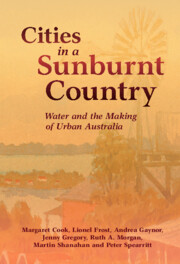186 results
Achromobacter cluster related to COVID-19 supply chain issues
-
- Journal:
- Antimicrobial Stewardship & Healthcare Epidemiology / Volume 4 / Issue 1 / 2024
- Published online by Cambridge University Press:
- 29 April 2024, e67
-
- Article
-
- You have access
- Open access
- HTML
- Export citation
McMurdo Dry Valley lake edge ‘moats’: the ecological intersection between terrestrial and aquatic polar desert habitats
-
- Journal:
- Antarctic Science , First View
- Published online by Cambridge University Press:
- 19 April 2024, pp. 1-17
-
- Article
-
- You have access
- Open access
- HTML
- Export citation
Youth adversity and trajectories of depression/anxiety symptoms in adolescence in the context of intersectionality in the United Kingdom
-
- Journal:
- Psychological Medicine , First View
- Published online by Cambridge University Press:
- 16 April 2024, pp. 1-11
-
- Article
-
- You have access
- Open access
- HTML
- Export citation
Variation of subclinical psychosis across 16 sites in Europe and Brazil: findings from the multi-national EU-GEI study
-
- Journal:
- Psychological Medicine / Volume 54 / Issue 8 / June 2024
- Published online by Cambridge University Press:
- 30 January 2024, pp. 1810-1823
-
- Article
-
- You have access
- Open access
- HTML
- Export citation
10 - Literacy and Linguistic Diversity in Australia
- from Part I - Regional Variations
-
-
- Book:
- Global Variation in Literacy Development
- Published online:
- 23 November 2023
- Print publication:
- 07 December 2023, pp 203-238
-
- Chapter
- Export citation
Cannabis use as a potential mediator between childhood adversity and first-episode psychosis: results from the EU-GEI case–control study
-
- Journal:
- Psychological Medicine / Volume 53 / Issue 15 / November 2023
- Published online by Cambridge University Press:
- 04 May 2023, pp. 7375-7384
-
- Article
-
- You have access
- Open access
- HTML
- Export citation
The association between reasons for first using cannabis, later pattern of use, and risk of first-episode psychosis: the EU-GEI case–control study
-
- Journal:
- Psychological Medicine / Volume 53 / Issue 15 / November 2023
- Published online by Cambridge University Press:
- 02 May 2023, pp. 7418-7427
-
- Article
-
- You have access
- Open access
- HTML
- Export citation
Child maltreatment, migration and risk of first-episode psychosis: results from the multinational EU-GEI study
-
- Journal:
- Psychological Medicine / Volume 53 / Issue 13 / October 2023
- Published online by Cambridge University Press:
- 28 October 2022, pp. 6150-6160
-
- Article
-
- You have access
- Open access
- HTML
- Export citation
Duncan Bell. Dreamworlds of Race: Empire and the Utopian Destiny of Anglo-America. Princeton: Princeton University Press, 2020. Pp. 488. $39.95 (cloth).
-
- Journal:
- Journal of British Studies / Volume 61 / Issue 4 / October 2022
- Published online by Cambridge University Press:
- 20 December 2022, pp. 1050-1052
- Print publication:
- October 2022
-
- Article
- Export citation
Acknowledgements
-
- Book:
- Cities in a Sunburnt Country
- Published online:
- 19 May 2022
- Print publication:
- 19 May 2022, pp xv-xviii
-
- Chapter
- Export citation
Copyright page
-
- Book:
- Cities in a Sunburnt Country
- Published online:
- 19 May 2022
- Print publication:
- 19 May 2022, pp vi-vi
-
- Chapter
- Export citation
Figures
-
- Book:
- Cities in a Sunburnt Country
- Published online:
- 19 May 2022
- Print publication:
- 19 May 2022, pp ix-x
-
- Chapter
- Export citation
8 - Twenty-First Century Australian Cities
-
- Book:
- Cities in a Sunburnt Country
- Published online:
- 19 May 2022
- Print publication:
- 19 May 2022, pp 198-230
-
- Chapter
- Export citation
Notes
-
- Book:
- Cities in a Sunburnt Country
- Published online:
- 19 May 2022
- Print publication:
- 19 May 2022, pp xii-xii
-
- Chapter
- Export citation
Index
-
- Book:
- Cities in a Sunburnt Country
- Published online:
- 19 May 2022
- Print publication:
- 19 May 2022, pp 273-278
-
- Chapter
- Export citation
References
-
- Book:
- Cities in a Sunburnt Country
- Published online:
- 19 May 2022
- Print publication:
- 19 May 2022, pp 241-272
-
- Chapter
- Export citation
6 - Watering Suburbia
-
- Book:
- Cities in a Sunburnt Country
- Published online:
- 19 May 2022
- Print publication:
- 19 May 2022, pp 135-162
-
- Chapter
- Export citation
Maps
-
- Book:
- Cities in a Sunburnt Country
- Published online:
- 19 May 2022
- Print publication:
- 19 May 2022, pp xi-xi
-
- Chapter
- Export citation
1 - Prologue
-
- Book:
- Cities in a Sunburnt Country
- Published online:
- 19 May 2022
- Print publication:
- 19 May 2022, pp 1-26
-
- Chapter
- Export citation

Cities in a Sunburnt Country
- Water and the Making of Urban Australia
-
- Published online:
- 19 May 2022
- Print publication:
- 19 May 2022



